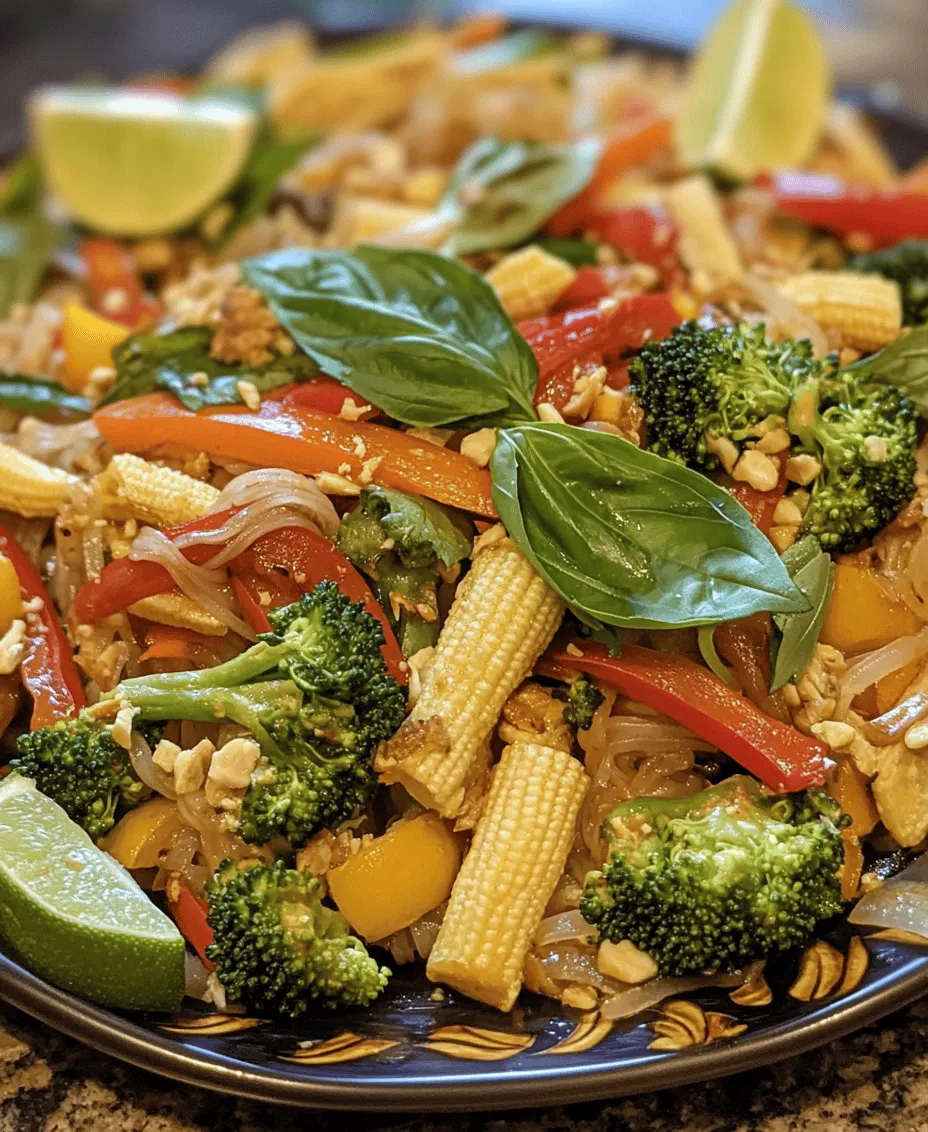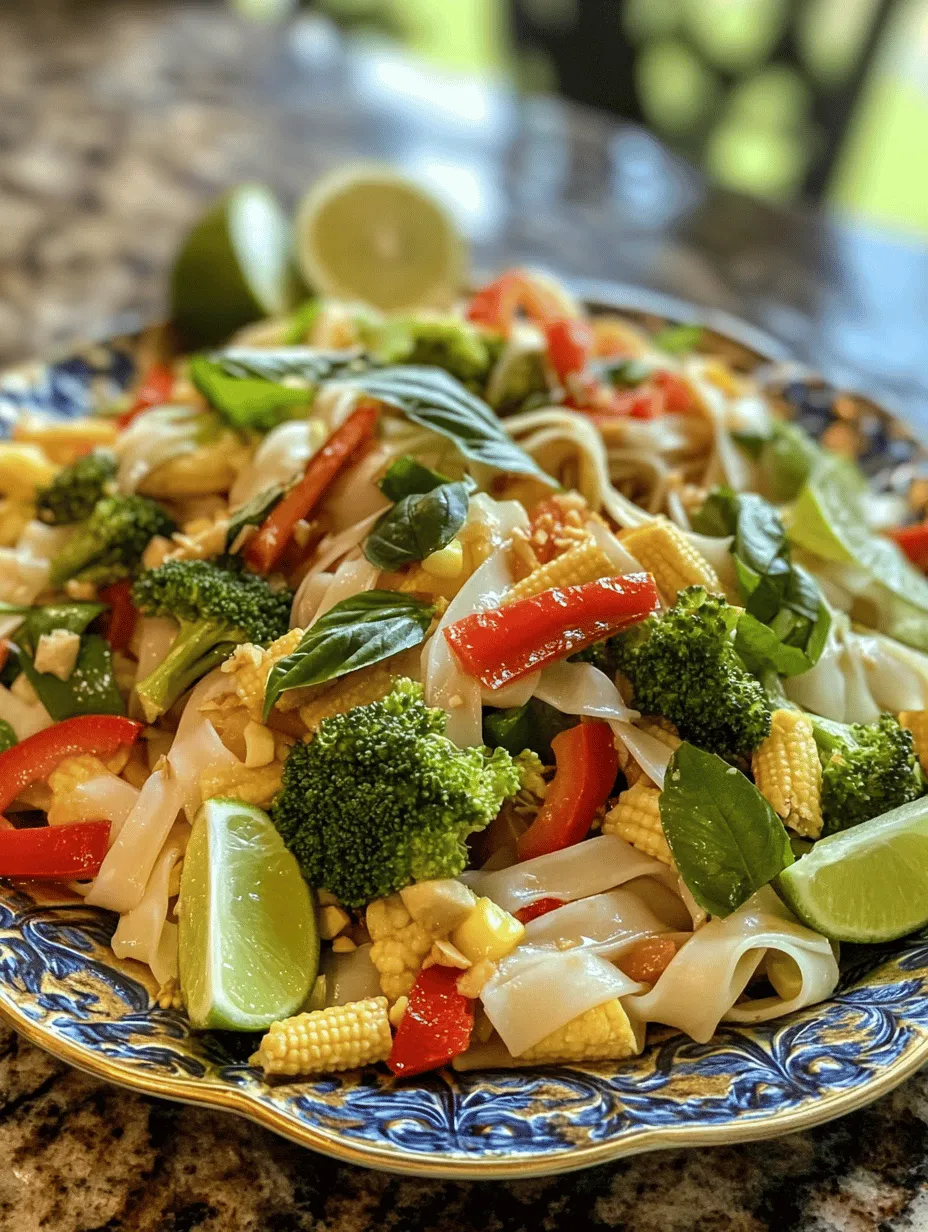Introduction
Thai cuisine is a vibrant tapestry woven from a multitude of flavors, textures, and aromas. Renowned for its ability to balance sweet, salty, sour, and spicy elements, it delivers a culinary experience that is both exciting and satisfying. Among the many dishes that exemplify this balance is Drunken Noodles, or Pad Kee Mao—a popular stir-fried noodle dish that has captured the hearts and palates of food lovers around the globe. The name “Drunken Noodles” evokes intrigue, with various tales attributing its origins to the late-night cravings of intoxicated revelers seeking a hearty meal.
This dish is not just about indulgence; it embodies the essence of Thai cooking, with its fresh ingredients and bold flavors. Drunken Noodles are typically made with wide rice noodles, stir-fried with a medley of vegetables, protein, and an array of aromatic sauces, resulting in a dish that is both comforting and invigorating. One of the most appealing aspects of this recipe is its adaptability; it can easily be tailored to suit various dietary preferences, whether you opt for tofu, chicken, or a vegetarian blend of fresh vegetables.
As we embark on this culinary adventure, we will explore the key ingredients that contribute to the dish’s distinctive flavor profile, understand the preparation steps, and prepare to create a delightful plate of Drunken Noodles that is sure to impress.
Understanding the Key Ingredients
To create a truly authentic and flavorful plate of Drunken Noodles, it is essential to familiarize yourself with the key ingredients that define this dish. Each component plays a vital role in achieving the perfect balance of taste and texture.
Rice Noodles
The foundation of Drunken Noodles is the rice noodle, which comes in various thicknesses. For this recipe, wide rice noodles are preferred, as they provide the perfect canvas for absorbing the rich flavors of the sauce. When selecting rice noodles, look for those labeled as “fresh” or “dry.” Fresh rice noodles offer a chewy texture, while dry noodles require soaking and cooking.
Cooking Tips: If using dried rice noodles, soak them in warm water for about 30 minutes until pliable but not fully cooked. This allows them to absorb water without becoming too soft, ensuring they maintain the ideal texture during stir-frying.
Fresh Vegetables
Color and texture are paramount in Drunken Noodles, and incorporating a variety of fresh vegetables not only enhances the dish’s appeal but also contributes to its nutritional profile. Commonly used vegetables include bell peppers, carrots, broccoli, and Thai basil. The vibrant colors of these vegetables not only make the dish more visually appealing but also add layers of flavor and crunch.
Importance of Freshness: Always opt for seasonal and fresh vegetables, as they provide the best flavor and texture. Slice them into uniform sizes to ensure even cooking.
Proteins
Drunken Noodles can be customized with various proteins, making them a versatile option for different diets. Tofu is a popular choice for vegetarians and vegans, soaking up the flavors of the sauces while providing a satisfying texture. On the other hand, chicken is often used in traditional recipes, bringing a savory richness to the dish.
Flavor Profiles: Tofu has a mild flavor that allows it to absorb the sauce’s essence, while chicken adds a hearty protein element that complements the noodles and vegetables beautifully.
Sauces
The sauces used in Drunken Noodles are crucial for creating depth and complexity in flavor. A combination of soy sauce, oyster sauce, and fish sauce is commonly employed.
– Soy Sauce: Adds saltiness and umami.
– Oyster Sauce: Provides a rich, slightly sweet flavor that enhances the dish’s overall depth.
– Fish Sauce: Contributes a distinct savory note that is characteristic of many Thai dishes.
Balancing Flavors: Adjusting the proportions of these sauces allows you to create a personalized flavor profile, ensuring that your Drunken Noodles are tailored to your taste preferences.
Preparation Steps Explained
Now that we understand the key ingredients, it’s time to delve into the essential preparation steps that will set the stage for creating a delicious dish of Drunken Noodles. Each step is designed to enhance the flavors and ensure that the final result is nothing short of exceptional.
Soaking and Cooking the Rice Noodles
The first step in preparing Drunken Noodles is to soak the rice noodles if you are using dried ones. Soaking them in warm water for about 30 minutes will soften the noodles and prepare them for cooking.
Techniques for Perfect Texture: After soaking, drain the noodles and set them aside. Avoid over-soaking, as this can lead to mushy noodles. If using fresh noodles, simply rinse them under cold water to separate them before cooking.
Crafting the Sauce
Creating a flavorful sauce is crucial for achieving the authentic taste of Drunken Noodles. In a small bowl, combine soy sauce, oyster sauce, and fish sauce. For those who prefer a spicier kick, consider adding a dash of sriracha or chili paste to the mix.
Balancing Flavors: Taste the sauce before adding it to the stir-fry, adjusting the proportions of each ingredient to suit your palate. A well-balanced sauce will elevate the dish and tie all the flavors together.
Stir-Frying Basics
Stir-frying is the cooking method that brings Drunken Noodles to life. To achieve the best results, use a wok or a large skillet over high heat. This allows for quick cooking and helps to retain the freshness of the vegetables.
Importance of High Heat and Timing: Preheat the pan until it is hot before adding the oil. This ensures that the ingredients sear quickly, locking in their flavors and preventing them from becoming soggy.
Garlic and Chilies: Building the Aromatic Base
Garlic and fresh chilies form the aromatic base of Drunken Noodles, infusing the dish with a savory and slightly spicy aroma. Begin by finely chopping garlic and slicing fresh chilies to your desired level of heat.
Cooking Aromatics: In the hot wok, add oil followed by garlic and chilies. Stir-fry for about 30 seconds until fragrant, being careful not to burn them, as this can impart a bitter taste to the dish.
Cooking Proteins to Perfection
If you are using chicken or tofu, now is the time to add them to the wok. For chicken, slice it into thin strips for even cooking. For tofu, press it to remove excess moisture, then cut it into cubes for a satisfying bite.
Tips for Achieving the Right Doneness: Cook the protein until it is golden brown and cooked through. For chicken, ensure that it reaches an internal temperature of 165°F (75°C). For tofu, aim for crispy edges while keeping the center soft.
Vegetables: Selecting and Preparing for Optimal Freshness and Crunch
As the protein cooks, add the fresh vegetables to the wok. This is where you can get creative—choose a mix that provides a variety of colors and textures. For example, bell peppers add sweetness, broccoli adds crunch, and Thai basil elevates the dish with its aromatic flavor.
Preparation Tips: Slice the vegetables into uniform sizes to ensure they cook evenly. Add them to the wok in stages, starting with those that require longer cooking times, such as carrots and broccoli, followed by quicker-cooking vegetables, like bell peppers.
With these initial steps laid out, you are well on your way to creating a delectable dish of Drunken Noodles. The combination of fresh ingredients, bold flavors, and the lively stir-frying technique will transport you to the bustling streets of Thailand, where this dish is often enjoyed as a late-night treat or a satisfying meal at any time of day. As we continue, we will explore the detailed cooking method to ensure that your Drunken Noodles Delight is a culinary success.




